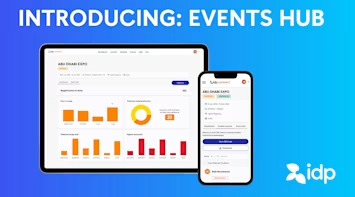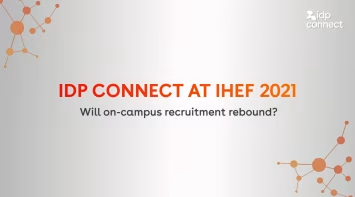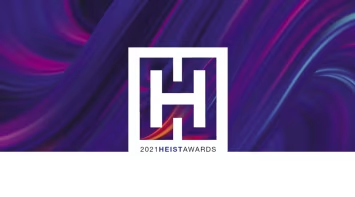Introduction
From MSN chatbots to Siri and Alexa, AI has existed in our everyday lives for some years now. However, the recent introduction of Generative AI such as ChatGPT and Dall-E has reignited debates over the ethics of using non-human AI systems in important processes. And yet, research shows the majority of Generation Z are currently using AI to some degree, and in noticeably higher volumes than older generations.
It appears likely that the use of AI will only increase amongst young people in coming years. In international education, this presents several opportunities. Not only could different forms of AI help prospective students to find an institution that best suits them and in quicker time, but it could also help institutions streamline their recruitment efforts and strategies. In this article, we will explore how higher education providers can use AI in their recruitment efforts, as well as drawing upon internal IDP data to unpack how prospective and current students feel about this technology.
How are institutions using AI?
AI has strengthened key processes across international education, with various approaches being used to overcome geographical and time zone barriers separating students from institutions. Many institutions use chatbots or IVR (Interactive voice response) systems in real-time to help answer any questions or concerns prospective students may have. Some institutions even employ virtual campus tours for prospective students who previously lacked the privilege of using in-person tours to inform their final decision. Automated emails and translation services for students who aren’t native English speakers are further examples of AI being used in the recruitment and enrolments processes.
Facilitating human to human connection and interaction remains the sector’s cornerstone. And while AI could potentially ease many of the difficult processes associated with recruitment and enrolment, it could also interrupt those vital human interactions if too heavily relied upon. With this in mind, it’s important to consider how prospective and current students feel about AI and its role in international education.
How are students using AI?
According to IDP’s Emerging Futures 4 (EF4) survey from August 2023, 41% of prospective and current students said they expected the institutions where they’d applied would use AI to assess all, or part of their application. This is compared with roughly 32% who said they didn’t think AI would be used, and just under 27% who weren’t sure. Just under 3500 students responded to this question.

EF4 also saw most respondents split on whether or not the use of AI in determining an applicant’s suitability for a course could make the process fairer or could discriminate against certain types of students. Nearly 35% of respondents agreed that the process could be made fairer, whilst just under 32% said AI discriminating against certain types of students was a possibility. Furthermore, roughly 20% of respondents said using AI could actually make the process unfair for all. This is compared with the nearly 14% who said AI would make no difference at all.

Despite this uncertainty, roughly 51% of EF4 respondents said they intended to use or had already used ChatGPT or another type of generative AI to write their applications. This is compared with nearly 39% who said they wouldn’t or hadn’t used AI.
When it comes to using AI, students understand its usefulness while still approaching it with some caution. That said, there applications of AI which have shown to be undoubtedly beneficial for prospective students.
How does IDP use AI?
Since its launch, IDP’s offer-in-principle service FastLane has helped streamline and simplify the traditionally laborious and stressful admissions process. This online system combines AI with input by our skilled counsellors to generate an offer-in-principle for prospective students within two days of applying. While AI plays a role, FastLane is not a complete AI system. In fact, it successfully combines two core elements of IDP –applying new technologies while maintaining human-to-human contact through our skilled counsellors.
While EF4 revealed doubts among prospective and current students when it came to the role of AI in admissions, combining AI with traditional methods may prove beneficial for institutions and students. This is especially true of turnaround times. According to EF4, the majority of respondents (roughly 40%) said between 2 and 4 weeks was a reasonable amount of time to wait for a response. In fact, most respondents (30%) said over 4 weeks is the longest they’ll wait for a response before reconsidering their choice of institution. This is compared with the roughly 6% who said over 10 weeks is the longest they were willing to wait.
This is not surprising, considering that moving overseas for study can be a daunting task, and time is of the essence for prospective students. However, the surging application numbers of recent years means admissions teams are also working hard to meet this demand. AI-informed initiatives and enhancements such as FastLane can help to accelerate these processes without having to sacrifice genuine human-to-human interaction. FastLane is already showing great promise, with 93 institutions using FastLane in their recruitment processes as of June 2023, and over 17,000 students having received offers through FastLane.
IDP has also started using AI to strengthen its online English language testing. Launched in December 2023, Envoy is IDP’s new adaptive English language test which can be taken anywhere. Not only is it built upon decades of IDP insight into effective English language testing, but it also combines linguist expertise and AI technology to continuously support students and assess their progress throughout their English language journey.
While AI has an increasingly key role, FastLane and Envoy are emblematic of IDP’s commitment not to remove human-to-human processes, but to strengthen them.
Conclusion
With growing demand for international education, it is important our sector continues to explore all avenues which could help to streamline our most important processes. That said, whichever capacity it’s used, it is important institutions remain transparent about the presence of AI to assuage any uncertainties amongst prospective students. As useful as AI can be, prospective students still want human-to-human interactions in the applications process. Other uses of AI, such as the aforementioned chatbots, IVR, automated emails, and virtual campus tours can still supplement recruitment efforts by helping to bridge the geographical divide between prospective student and overseas institution.
While AI has several useful applications in our sector, many prospective and current students still hold doubts about its fair usage, something which will require continuous discussion. The topic of “The Human Element”, and how human interactions can be facilitated in an increasingly digital era will be explored later this year when AIEC 2024 comes to Melbourne from 22 to 25 October.
You might like...

IQ Case Study: MacEwan University
Explore the results of a successful IQ consulting project at MacEwan University

Innovation in Action – Welcome to the IDP Events Hub
Striving to offer more for partners and students, to enable better outcomes for all.

University of Alberta IQ Case Study
How a top 5 Canadian university uses IQ services to guide program expansion



